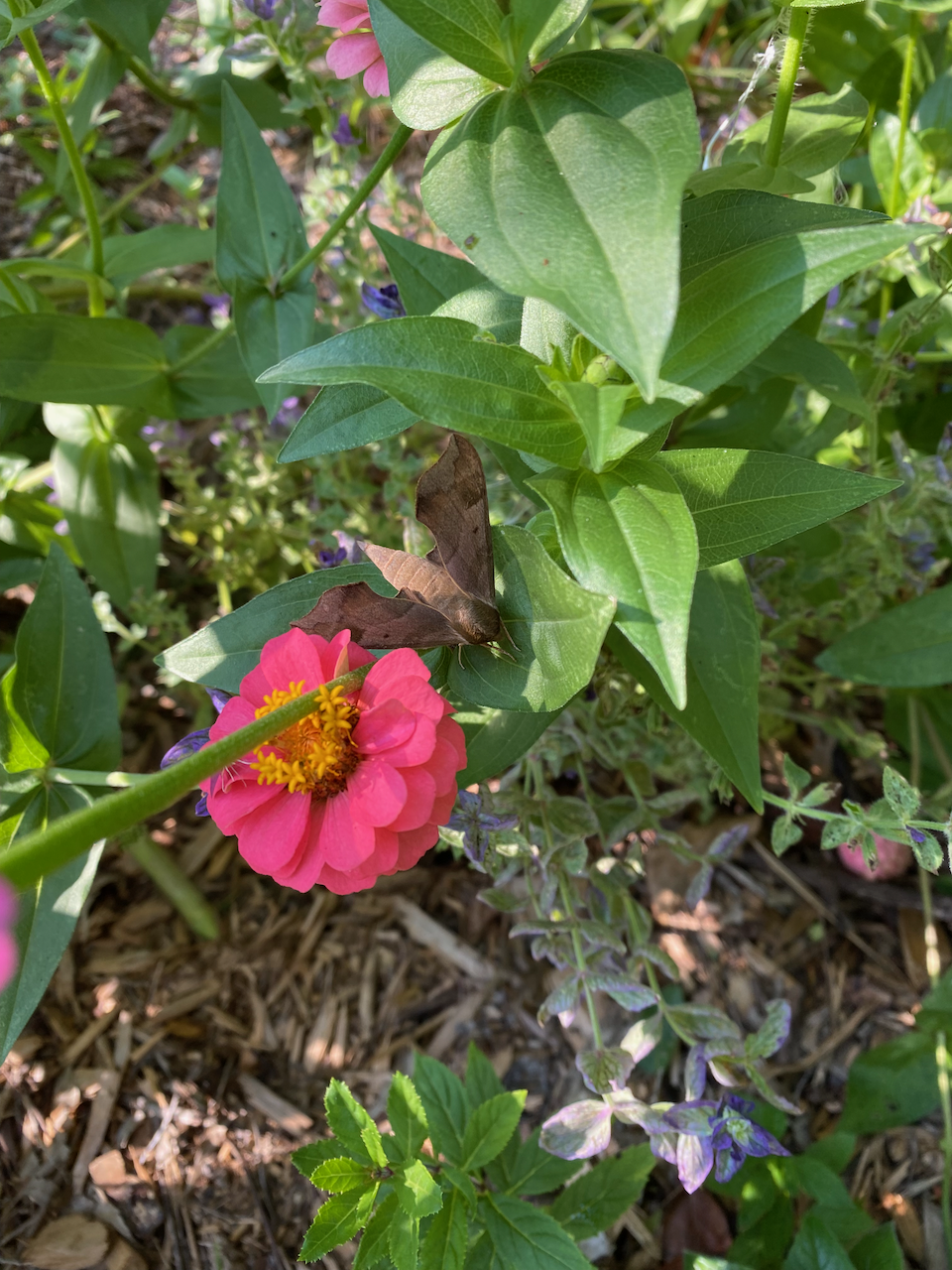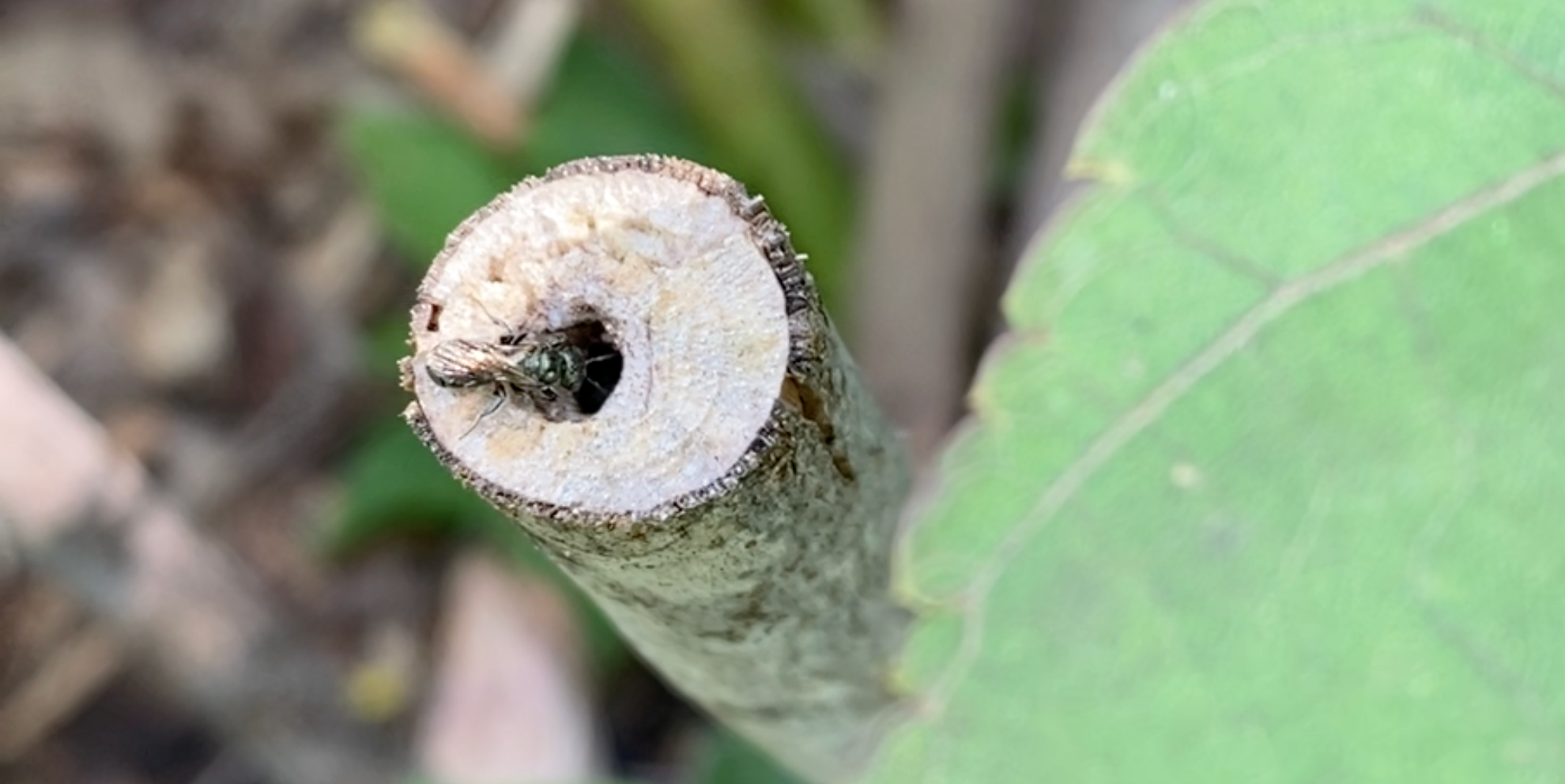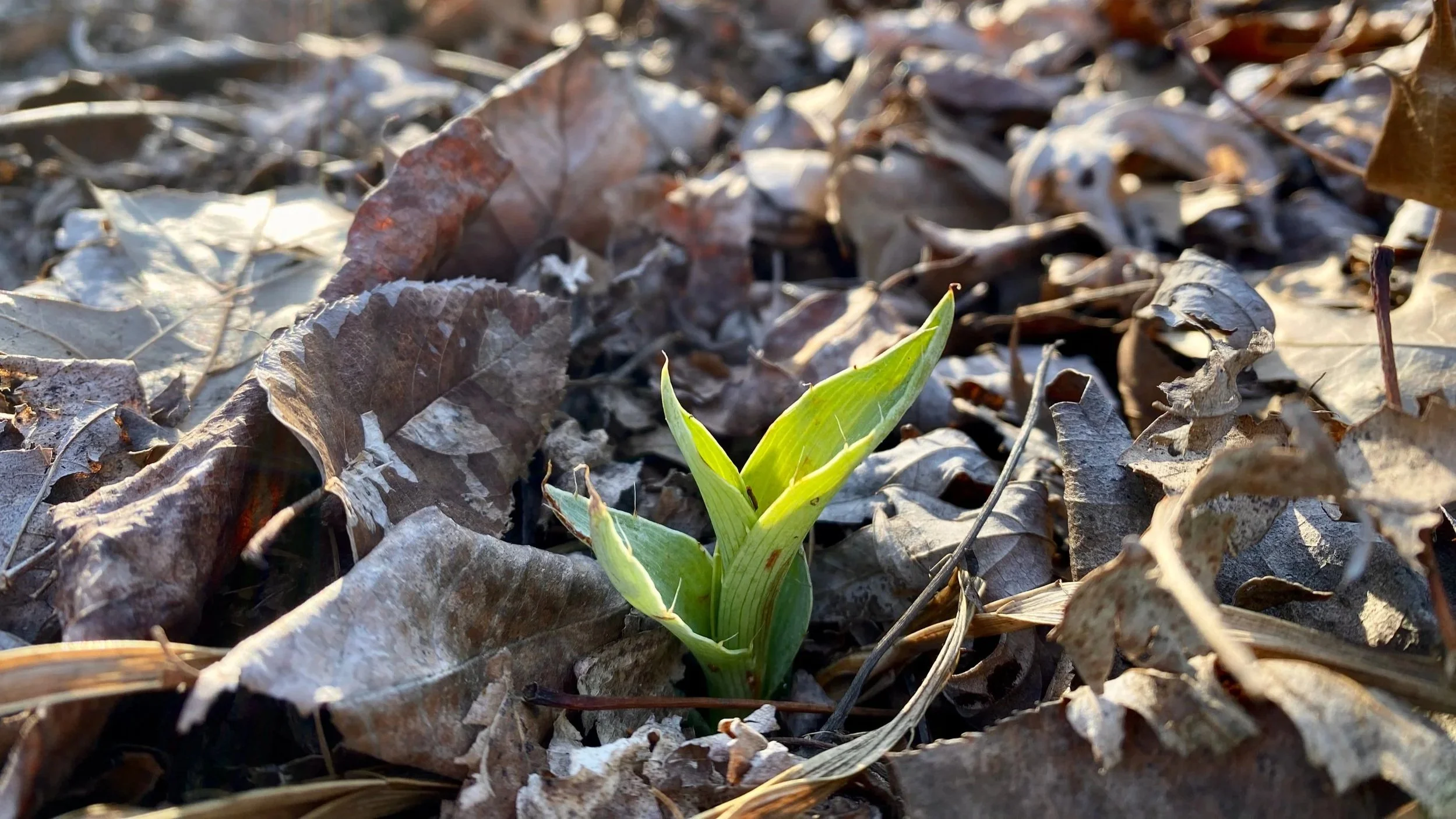Skip the Clean-Up This Fall
Let’s celebrate the change of the season and enjoy the remaining warm days without a rake in hand!
For decades we have been taught to clean up the leaves when they fall in autumn to protect the precious turf grass and, more importantly, because it looks messy, we do call it “litter” after all. As a society we used to burn the leaves, we thankfully don’t do that anymore, but we still throw them out like they are garbage, when in reality, leaves are so much more! In today’s post I’m going to discuss the merits of leaves and other plant debris and why we need to reevaluate how we prepare our landscapes for winter.
“Leave the Leaves” campaigns are becoming more popular every year as we learn more about declining animal (including insects) populations due to habitat loss and overly-maintained landscapes. If you are unfamiliar with this research, here’s a primer on what leaves have to do with dwindling animal populations:
Every year our trees drop their leaves as a way to prepare for winter. Leaves change color as the tree moves nutrients from the leaves down to their roots. The leaves are dropped from the branches where the tree is “expecting” them to stay as a warm blanket to protect their roots from the harsh realities of winter. Once on the ground, the leaves create a natural mulch with the organic matter and nutrients the tree will need in the future. Along with the falling leaves are the insects (moths, katydids, tree crickets, and more) that live in the tree’s canopy. They are hitching a ride down to the ground where they will hide among the leaves as an egg, pupae, larvae, or adult to spend the winter until next year, assuming they aren’t found by a hungry bird in the meantime. Also hiding among the leaf litter are future fireflies! Those delightful summer nightlights spend two years roaming leaf litter and eating other insects before emerging as adults. As a top predator they help keep insect populations in balance.
So, when we rake or blow every leaf on our property to the curb to be sucked up and mulched up by the town, we’re actually discarding thousands of little lives in the name of tidiness and burdening our town with our property’s leaf “problem”.
In a nutshell, that is the “why” behind Leave the Leaves campaigns. Now what about the how?
A thick layer of leaves, especially heavy oak leaves, will harm your turf. A light layer of leaves, like Maple leaves, won’t harm your turf. Turf grass isn’t much of a habitat anyway since mowing usually begins in April before many of the overwintering insects have had a chance to emerge for the year. If you want to maintain a grassy area for playing on or for aesthetics, you’ll want to remove the leaves. However, instead of raking everything to the curb, let’s get creative! Here are some options that are good for tidiness and habitat:
Rake the leaves to your perennial garden beds and just like that your spring mulching task is complete! Your perennials prefer leaves over wood mulch and leaves suppress those early weeds better than wood mulch. (Did I mention it’s free and doesn’t require a wheelbarrow and shovel!?)
Pile the leaves at the base of the trees they fell from. If you’re worried about them blowing back into the turf, you can use a low wire garden fence to keep them contained. Rain will eventually matte them into place, though. If you pile it thick enough, the grass may naturally die and now you have the perfect space to plant perennials and create what’s called a “soft landing” for those insects coming down with the leaves. Also, your tree has never told you this, but it doesn’t like having its roots trampled by the mower.
If you have vegetable gardens, leaves are a great blanket for protecting your beds through the winter while adding organic matter to your soil.
While not ideal for the little lives on the leaves, mulching the leaves with a mower creates a great soil amendment.
Skip the garden clean-up as well!
Let’s not stop at tree leaves! If you have a pollinator garden, start thinking of it not just as a cafeteria, but as a hotel as well. Flower stems provide nesting cavities for native solitary bees which have very different lives than honeybees. Leaving the garden standing provides shelter for winter protection and cover from predators for smaller animals, it’s also more interesting to look at than a barren landscape in the grayest days of winter. Seed heads provide food for birds and small mammals. Just like the trees, perennials are expecting last year’s growth as natural mulch and for returning nutrients to the soil. Native grasses have beautiful warm colors that persist through the winter, softening the landscape, providing seed for animals, and providing nesting material come spring. So leave the clippers in the sheath and leave the stems standing until mid-spring when everything has woken up, new growth will soon cover the old and be out of sight and mind (more on that topic in the spring!).
There are two exceptions to all of this. First, if you have a tree or plant with a disease issue, remove and discard those leaves and/or stems to reduce the disease pressure for next year. Second, if you are gardening in a small space and have some aggressive species, removing seed heads is necessary for keeping populations under control. Put the seeds in your bird feeder, share them with a friend, or give them to a local seed library.
Tossing your leaf and plant “litter” to the curb every fall means throwing away next year’s pollinators and eliminating food and shelter for our animal neighbors. Making some space for them in our yards means we will continue to have fireflies, swallowtail butterflies, grasshoppers, songbirds, lady beetles, toads, and more to delight our senses and keep our ecosystem in balance for years to come. It also means less work so we can enjoy our yards more, even while the colors change and the plants and animals prepare for winter.
So, if you can skip (or skimp on) your fall clean-up, I promise not to judge you for having a “messy” yard. Actually, I’ll thank you for striving to have a more vibrant and resilient future.




